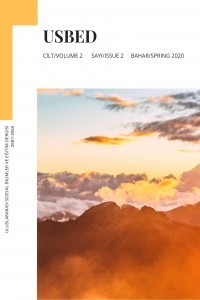
Uluslararası Sosyal Bilimler ve Eğitim Dergisi
Yazarlar: Nino OTKHOZORİA
Konular:Uluslararası İlişkiler
Anahtar Kelimeler:Migration,Education,Labour,China,India
Özet: The paper examines and discusses the socio-economic aspects of the migration of Chinese workers and Indian students to Georgia. It outlines the reasons why Chinese workers immigrate to the country in search of work at the time when Georgian citizens become labor migrants themselves. The paper highlights what attracts them and how they feel in the far-away foreign country such as Georgia. As for the Indians, the labor market of Georgia does not attract them, since usually, the are youngsters interested in Georgian educational space, especially in medical programs. The hypothesis of the study is as follows: the impact of labor and educational migration on Georgia's socio-economic sphere. The study mainly uses an analysis method based on the study of the modern situation, documents and empirical material. The basis of source – scientific articles, the press materials and documents published on official websites in the field of cultural policy.